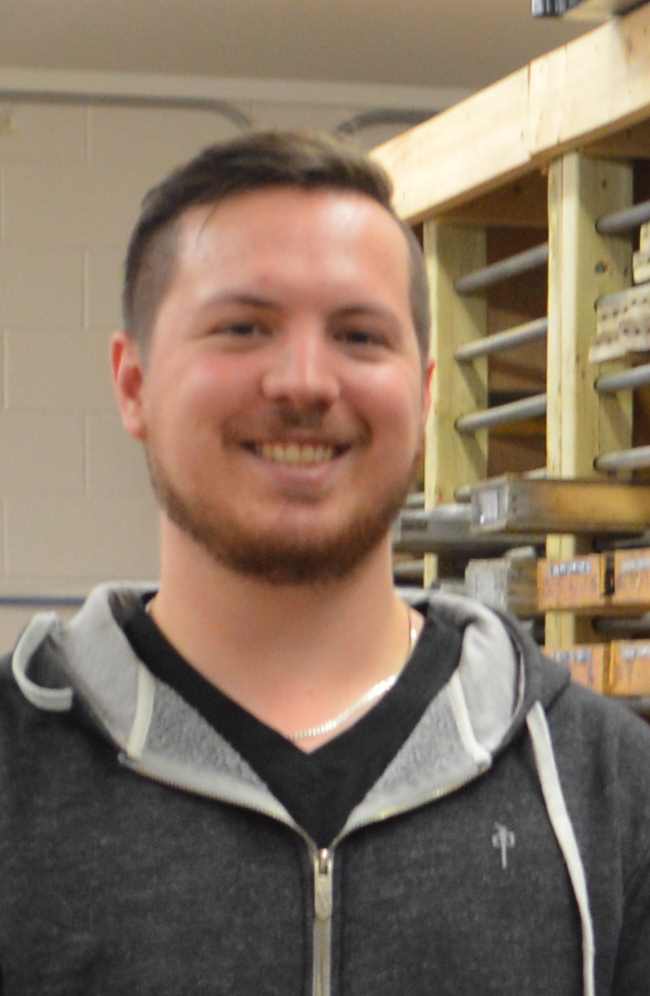
By
Hamid Mumin, Riley Cram, Blake Tinkess, Greg Gaboury, and Braden Watts
April 2017
Print Version
What you need to know
Throughout much of northern and rural Canada, roads are constructed of unpaved aggregate. They are expensive to maintain, environmentally problematic and degrade rapidly. We are developing a solution to this problem by using local clay-rich materials. With the addition of catalysts and polymeric agents, we are manipulating the natural properties of clays, and causing them to act like a cementing agent. This produces a durable, low-cost road that requires minimal maintenance, and eliminates the detrimental aspects of current construction practice.
Why this research is important
If you live near or use gravel roads, then you know the problem! These roads comprise weakly bound to unbound aggregate. They generate choking and noxious dust clouds when dry, and quickly lose strength and degrade to mucky conditions when wet. Current mitigation relies on constant and expensive maintenance, and the local application of chloride salts, with only temporary results. Consequently, there is a critical need for low-cost and environmentally sustainable construction techniques for the stabilization of unpaved roads throughout rural and northern Manitoba and across Canada.
How the research is being done
Part of the research is carried out in the laboratory, and part is field-testing. We test the binding and bearing strength of local materials comprised of varying clay-aggregate mixes, with varying catalyst and polymer applications, compaction energies, curing times and moisture content. We also test for maximum resistance to moisture reabsorption. Field-testing includes a series of roads built near Brandon using parameters determined by the lab work, and which are monitored for strength, durability, drivability and dust production. All our research is carried out in close collaboration with Cypher Environmental of Winnipeg, the RM of Cornwallis Public Works, the City of Brandon Engineering Department, and local contractors.
What the researchers found out
We quickly discovered how little information is available to help solve the problem, and that standard geotechnical engineering tests and solutions cannot be applied to much of our research and testing. Consequently, we had to develop our own methods and standards. What we do know is that Cypher Environmental has been applying this technique to mine haul-road construction elsewhere in the world, using non-engineered in-situ materials on a near random basis with considerable success. We are adapting the process for use on rural and municipal roads in Canada, and for the first time, we have the opportunity to engineer the materials and process from start to finish in order to maximize road strength and durability. We have found that strength and durability are highly variable, depending on variations in the materials that are used, differences in catalysts and polymer addition, construction techniques, compaction, moisture, and curing. We have also discovered that we can build excellent roads in the Brandon area, in particular for heavy use traffic areas, using local clay-rich materials with specific design parameters. Check out the one-mile test section of Curries Landing road that is used by ~ 150 loaded gravel trucks daily. It was built in 2015 with this technology and has gone from three times daily maintenance to once yearly, with the cost of construction within the pre-existing budget for normal reconstruction.
How this research can be used
This research can be for low-cost construction of durable and sustainable roads across the country and indeed worldwide. Already, industry and government delegations have come from China, Honduras, India, Alberta and Manitoba to examine the 4 test roads currently in use around Brandon. With the proper design and construction, there is almost limitless opportunity to solve some of the worst chronic road problems in a sustainable and very cost effective manner.
The principal funding and technical support for this research are from Cypher Environmental of Winnipeg and a National Research Council-Industrial Research Assistance Program (NRC-IRAP) grant. We are very grateful to the RM of Cornwallis, City of Brandon Engineering, Bluestar Construction, Tri-Wave Construction and MIT for their generous and abundant support of this project. Support for Riley Cram and Blake Tinkess, was provided by an MITACS Accelerate grant, and an NSERC IUSRA grant, respectively. Brandon University provided space and generous assistance with the setup of the Geology Core Laboratory.
About the Researchers
Keywords
- aggregate
- clay binding
- durable sustainable roads
- polymer
- unpaved road stabilization
Editor: Christiane Ramsey
Read more BU Research
Research at Brandon University follows comprehensive policies designed to safeguard ethics, to ensure academic integrity, to protect human and animal welfare and to prevent conflicts of interest.



